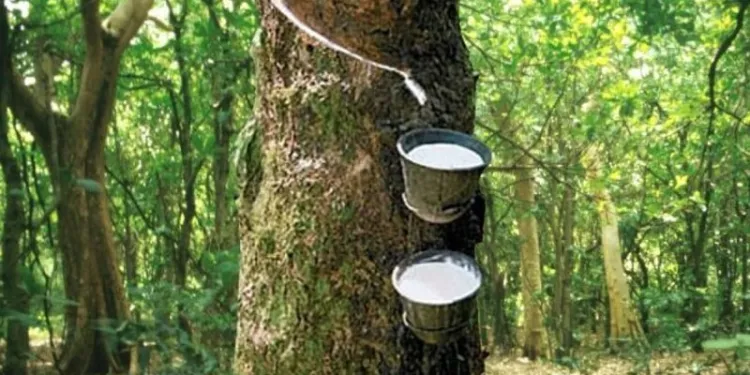There will be a decline in rubber production this year mainly due to the falling price of the commodity as well as extremely erratic weather. Rubber association Gapkindo chairman Daud Husni Bastari said on Thursday that rubber output would likely fall by 200,000 tons, or 6.6 percent, to 2.8 million tons this year. Previously, the association had expected a 2.4 percent increase of production to 3 million tons. Falling rubber prices will discourage growers from tapping, thereby result in a decline in output.
The rains during the dry season in some parts of the rubber-producing regions, particularly below the equator, will also reduce harvests as well as the tapping period. If the weather gets worse, production will likely drop even further, he said.
Rubber plunged to the lowest level in nine months on Wednesday after the yen rallied the most in three years against the dollar, sapping investor appetite for yen-dominated rubber futures, Bloomberg reported.The November delivery fell by 3.4 percent to 240 yen per kilogram (US$2,480 a metric ton) on the Tokyo Commodity Exchange, the lowest settlement since Sept. 11. Futures losses this year extended to 21 percent.
Drops in rubber prices in the past year have forced Thailand, Indonesia and Malaysia, the world’s three biggest rubber suppliers, to agree to reduce the supply to bolster prices through an agreed export tonnage scheme and supply management.
The measures, put into effect in October after futures on the Tokyo Commodity Exchange plunged to a three-year low of ¥205.6 in August last year, have already cut supply by 300,000 tons through March this year, with Indonesia holding back shipment of 120,000 tons.
The mechanism is now under review by the International Tripartite Rubber Council (ITRC), which represents 70 percent of the world’s supply, during a three-day meeting in Palembang, South Sumatra, until Friday.
Indonesia has proposed an end to the measures as it considers price fluctuation has been highly affected by external factors beyond production and supply, such as dwindling demand for Chinese tires from the European countries, according to Daud.
In another move to control supply, Gapkindo asked fellow members at the meeting to set up a similar rubber council by including other Southeast Asian countries Vietnam, Laos and Cambodia which together with Thailand, Indonesia and Malaysia account for 95 percent of global output.
Erwin Tunas, the executive director assistant of Gapkindo, said that in line with the lower output, local rubber producers also anticipated a drop in exports by 5 percent to 2.32 million tons from last year.Exports may be down around 100,000 tons at the maximum from last year, he said.
In another development, Gapkindo requested the government on Wednesday in a meeting at the House of Representatives to mull banning foreign companies from investing in the crumb rubber production.
Indonesia’s crumb rubber production capacity totaled 4.7 million tons per year, while the domestic industry is now using only 3 million tons, according to the business group.
In response to the request, Industry Ministry’s director general for manufacturing-based industry said that the government would study the proposal carefully as at present Indonesia welcomed foreign investment operating in the country by setting up a local unit or a joint venture with domestic partners.
Source: The Jakarta Post




























